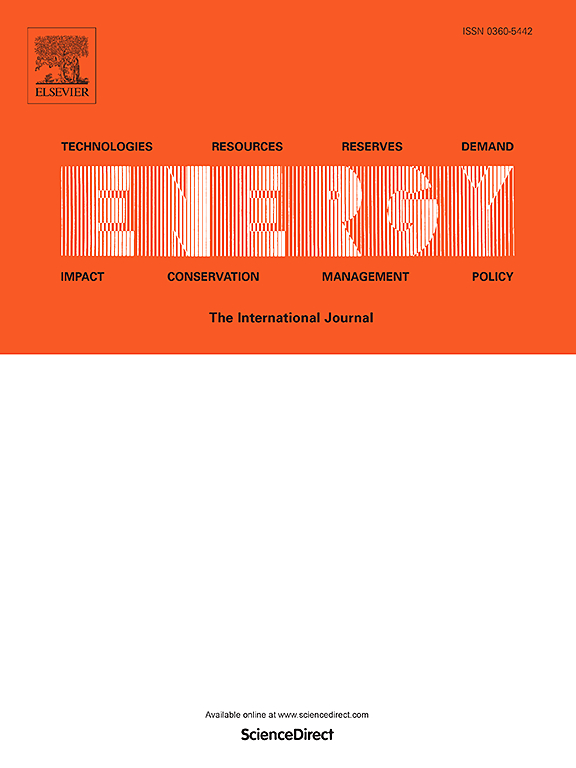在质子陶瓷燃料电池中利用煤基燃料产生氢气、甲烷和电能三项能源
IF 9
1区 工程技术
Q1 ENERGY & FUELS
引用次数: 0
摘要
本文章由计算机程序翻译,如有差异,请以英文原文为准。
Hydrogen, methane and power tri-generation from coal-based fuels in protonic ceramic fuel cells
The traditional utilization of coal fuels is primarily through direct combustion to generate electricity, with low efficiency and significant carbon dioxide emissions conflicting with the goal of carbon neutrality. Here, for the first time, we proposed a novel electrochemical system to achieve the tri-generation of hydrogen, power, and methane from coal-based fuels, with CO2 emission efficiency reduced in tail gas, enabled by protonic ceramic fuel cells (PCFCs) combined with water gasification of coal and CO2 methanation. As demonstrated, the system firstly achieved an enhanced hydrogen production rate of up to 34.8 μmol min−1 g−1 from the syngas produced by coal gasification. Sequentially, the system achieved an excellent peak power density of 868 mW cm−2 at 600 °C in the PCFCs fueled by the syngas, enhanced by a catalytic functional layer (CFL, NiMn@YSZ). In addition, the system is able to produce methane at 6.3 mL min−1 during in-situ CO2 methanation at 500 °C with a current density of 110 mA cm−2. This work introduces a new electrochemical strategy for efficiently utilizing coal to generate electricity and value-added chemicals.
求助全文
通过发布文献求助,成功后即可免费获取论文全文。
去求助
来源期刊

Energy
工程技术-能源与燃料
CiteScore
15.30
自引率
14.40%
发文量
0
审稿时长
14.2 weeks
期刊介绍:
Energy is a multidisciplinary, international journal that publishes research and analysis in the field of energy engineering. Our aim is to become a leading peer-reviewed platform and a trusted source of information for energy-related topics.
The journal covers a range of areas including mechanical engineering, thermal sciences, and energy analysis. We are particularly interested in research on energy modelling, prediction, integrated energy systems, planning, and management.
Additionally, we welcome papers on energy conservation, efficiency, biomass and bioenergy, renewable energy, electricity supply and demand, energy storage, buildings, and economic and policy issues. These topics should align with our broader multidisciplinary focus.
 求助内容:
求助内容: 应助结果提醒方式:
应助结果提醒方式:


